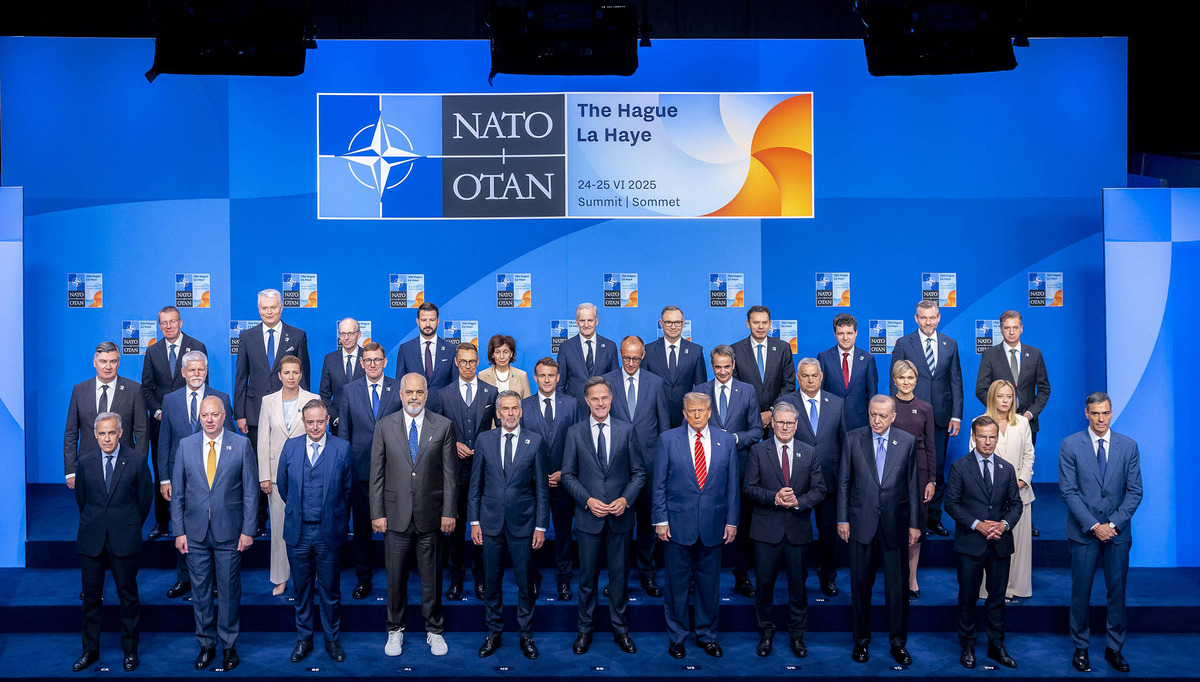Already a subscriber? Make sure to log into your account before viewing this content. You can access your account by hitting the “login” button on the top right corner. Still unable to see the content after signing in? Make sure your card on file is up-to-date.
NATO has agreed to dramatically raise its defense spending target to 5% of GDP by 2035.
Some shit you should know before you read: If you’re unaware, a requirement for NATO membership is that each country commits to spending at least 2% of its gross domestic product (GDP) on defense. As of 2024, only 11 of the 32 member countries had met or exceeded this benchmark, including the United States, United Kingdom, Poland, and a handful of Eastern European nations. The majority of members (over 20 countries) continue to fall short, with nations like Spain, Belgium, and Canada consistently ranking among the lowest in defense spending when it comes to GDP. President Donald Trump has repeatedly criticized this imbalance, suggesting that the US might withhold defense commitments under Article 5 (NATO’s collective defense clause) from countries that fail to meet their financial obligations. At various points during his presidency and campaign trail, Trump warned that “delinquent” allies might be left to defend themselves unless they increased spending.

What’s going on now: During the NATO summit in The Hague, member nations agreed to a historic increase in defense spending, raising the alliance’s collective target from 2% to 5% of each country’s GDP by 2035. This new commitment represents the most significant strategic and financial overhaul of NATO policy in over a decade. The 5% target is divided into two main components: a minimum of 3.5% will go toward “core defense requirements,” including military personnel, equipment, operations, and readiness; the remaining 1.5% will be allocated to broader “defense-related” expenditures, such as critical infrastructure, cybersecurity, and the defense industrial base.
The decision to increase the target stems from a growing consensus that NATO faces significant threats. Among these is the ongoing war in Ukraine and China’s military buildup.
The 5% goal has generated pushback from a few member states, particularly those with lower GDP or historically limited military budgets. Spain, for instance, argued that it is already making an “enormous effort” to approach 2.1% and criticized the discussion as “misguided.” Belgium and Slovakia also expressed concerns about the feasibility of such a steep increase.
Attached is a list of NATO members & % of GDP spent on defense (2024):
- Albania – 2.03%
- Belgium – 1.30%
- Bulgaria – 2.18%
- Canada – 1.37%
- Croatia – 1.81%
- Czech Republic – 2.10%
- Denmark – 2.37%
- Estonia – 3.43%
- Finland – 2.41%
- France – 2.06%
- Germany – 2.12%
- Greece – 3.08%
- Hungary – 2.11%
- Iceland – 0.0%*
- Italy – 1.49%
- Latvia – 3.15%
- Lithuania – 2.85%
- Luxembourg – 1.29%
- Montenegro – 2.02%
- Netherlands – 2.05%
- North Macedonia – 2.22%
- Norway – 2.09%
- Poland – 4.12%
- Portugal – 1.55%
- Romania – 2.25%
- Slovakia – 2.00%
- Slovenia – 1.29%
- Spain – 1.28%
- Sweden – 2.14%
- Türkiye – 2.09%
- United Kingdom – 2.33%
- United States – 3.38%







